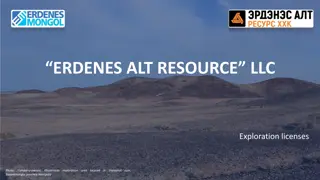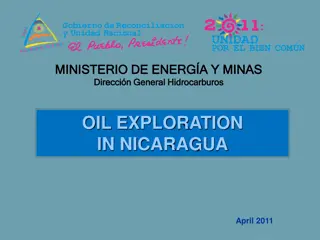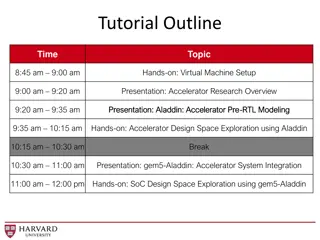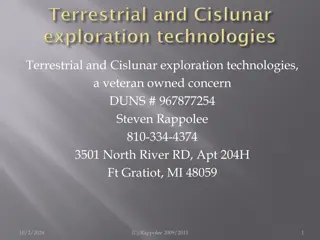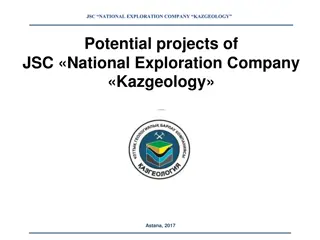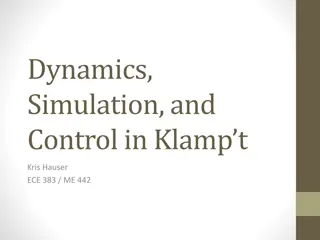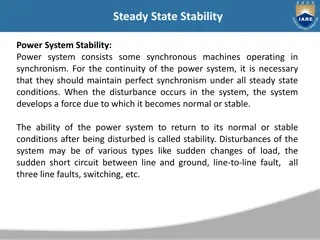Exploration of Snowline Dynamics in V883 Orionis System
Investigating the snowline position at 40 AU in the V883 Orionis protostellar system reveals insights into the accretion processes and heating mechanisms. Various studies analyze the properties of V883 Ori, its disk, and potential triggers for FU Ori outbursts. Observations highlight the signature of the snowline, different heating sources required, and the impact of outbursts on the snowline's position. Models suggest the interplay of stellar and viscous heating in determining the system's temperature profile. By studying these phenomena, researchers aim to understand the complex dynamics of protostellar environments.
Download Presentation

Please find below an Image/Link to download the presentation.
The content on the website is provided AS IS for your information and personal use only. It may not be sold, licensed, or shared on other websites without obtaining consent from the author.If you encounter any issues during the download, it is possible that the publisher has removed the file from their server.
You are allowed to download the files provided on this website for personal or commercial use, subject to the condition that they are used lawfully. All files are the property of their respective owners.
The content on the website is provided AS IS for your information and personal use only. It may not be sold, licensed, or shared on other websites without obtaining consent from the author.
E N D
Presentation Transcript
Fitting a snowline at 40AU at V883Ori Wladimir Lyra California State University, Northridge Felipe Alarc n (Universidad de Chile, University of Michigan), Simon Casassus (Universidad de Chile) Lucas Cieza (Universidad Diego Portales) Sebastian Perez (Universidad de Chile) ExSoCal, Sep 18th, 2018
Felipe Alarcon Michigan Los Angeles Santiago
V883Ori Class I protostar (Age ~0.5 Myr) (L * ~ 6 Lsun) M* = 1.3 +/- 0.1 Msun Mdisk ~ 0.3 Msun d = 414 +/-7 pc Ldisk = 400 Lsun 50AU Cieza et al. (2016)
V883Ori Cieza et al. (2016)
Extra source of heating needed Measured Passive disk Cieza et al. (2016)
Episodic Accretion Loading a dead zone 0.1 AU ~30 AU There should be a magnetized, active zone and a non-magnetic, dead zone
Possible FU Ori triggers Audard et al. (2014)
Signature of a snowline: Spectral index Optically thin ISM-ilke values Banzatti et al. (2014) Optically thick blackbody emission Cieza et al. (2016)
Signature of a snowline: Optical depth Optically thin Optically thick T=105+/-11 K (R ~ 40AU) Cieza et al. (2016)
Snowline pushed outward during outburst Cieza et al. (2016)
The model Stellar heating Viscous heating Effective temperature Midplane temperature Chiang et al. (2001), Alarcon et al. (in prep)
Viscous heating Alarcon et al. (in prep)
Best fit Alarcon et al. (in prep)
Self-shadowing Cieza et al. (2016), Alarcon et al. (in prep)
Conclusions First water snowline observed; Brightness temperature needs active heating; Fit consistent with accretional inner disk, passive outer disk; Self-shadowing reproduced; Episodic accretion is powering V883 Ori ! What is the mechanism??? Can we use it to study whatever is causing it? Gravitational instability? Magnetorotational instability? Planet? All of the above?
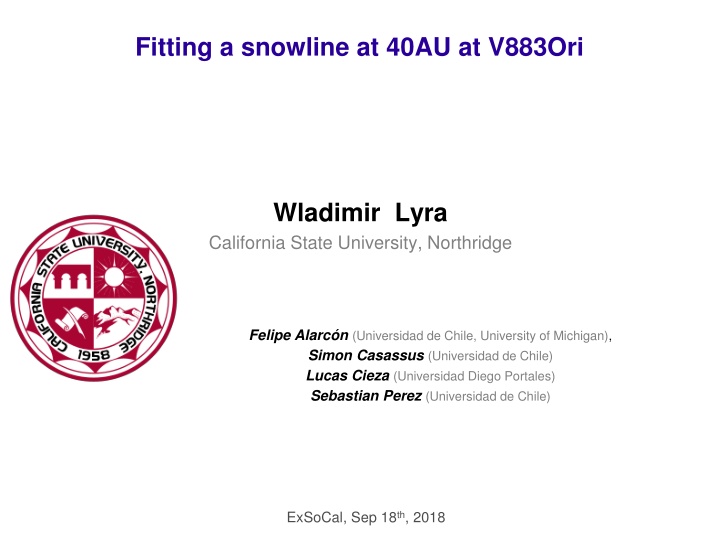

![❤[READ]❤ Robotic Exploration of the Solar System: Part I: The Golden Age 1957-19](/thumb/21623/read-robotic-exploration-of-the-solar-system-part-i-the-golden-age-1957-19.jpg)








